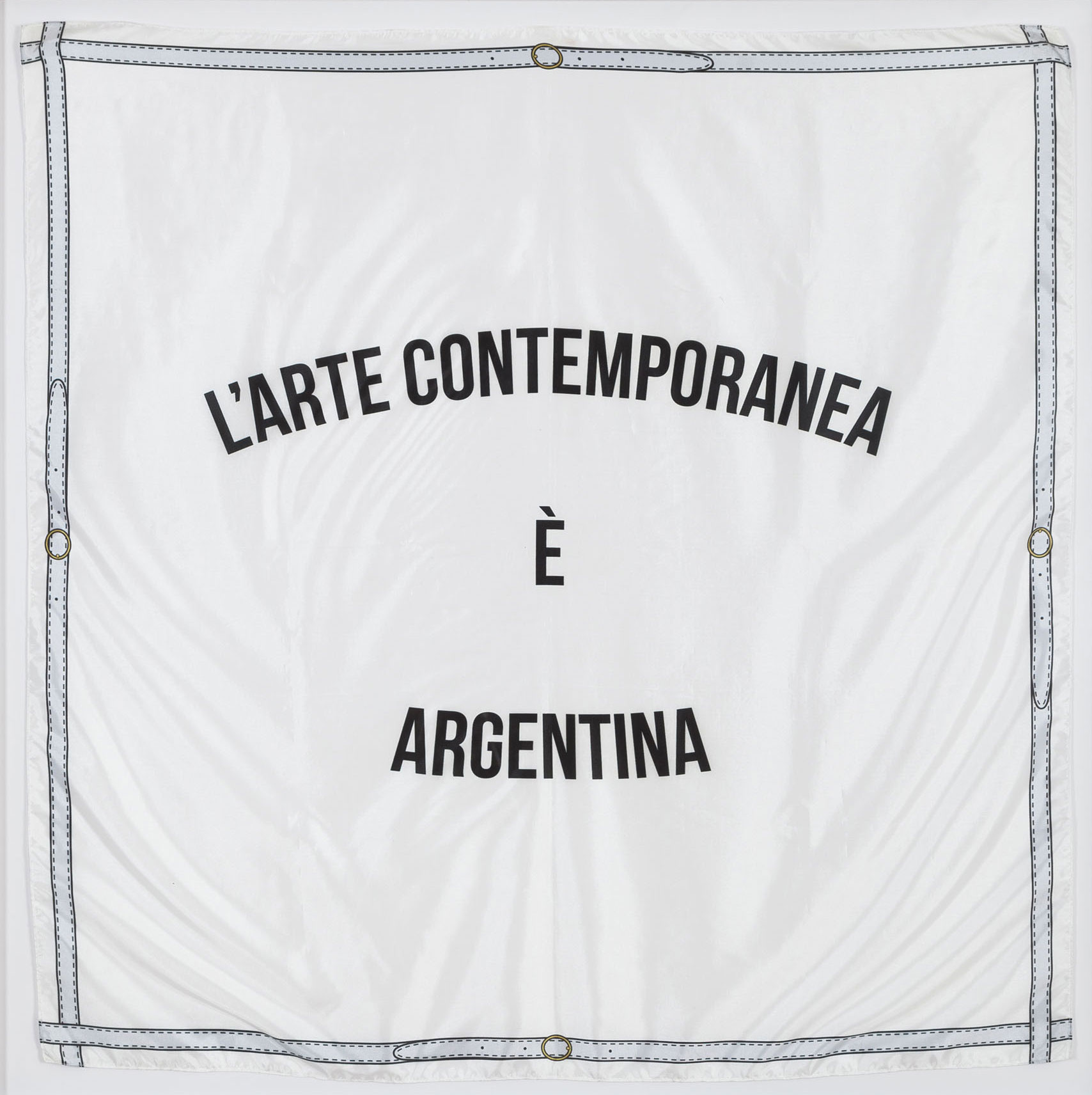On El Arte Contemporáneo es Argentino [Contemporary Art is Argentinean] (2015), by Valentín Demarco
Ariel Schettini

If we had an ample magnification lens to look at history at a glance, we could see in Valentín Demarco´s chisel strokes, hitting the metal that is taking shape, the cultural layers of which his work is made in a cross-section.
As he dialogues, recovers, contests and rethinks tradition and its versions, the history of Demarco´s work began long before his objects. It is the story that sets off with a founding fantasy: the goldsmithing school in Olavarría with its heroes and sacred objects. And if behind the establishment of every tradition there is always a messianic dream, the Olavarrian goldsmithing dream is not less significant than the Academy of the first thinkers. Because if, indeed, the school persists and triumphs, it is also because there are those who, like Demarco, revitalize and recreate it, but also return to certain traits that give it a recognizable form, an identity.
Therefore, if the question of tradition and its roots (the invention of tradition and the inventions that tradition unlocks) attains value in Demarco, it is not because he is determined to give himself legitimacy in his narrative, but because it allows the work to be read within the dialogue between a hand that operates the hammer and pushes a creative community. So it is possible to understand all his production as a muscle system getting refined over time, his schooling times, but also with the times of his community´s history, the silversmiths, the Argentine goldsmiths, until it became a trade. And, like any trade, it involves placing a memory in the body: thinking about the goldsmith´s profession is also going back to the past and a future destiny of the work.
From the original pre-Hispanic past to gaucho luxury, for its fundamental heritage (horse gear, spurs, belt, mate straw; fundamental instruments in peasant life whose power of incidence was and is stronger than iron), silver shines in national history before and after the colony until now. So, if you can read that community in Demarco´s work (the colonial one in its fascination with mining and later, the national one of agricultural work), its symbols, its aesthetics (the way in which the Italian baroque is imported into the ornamental motif of some pieces) will also be legible. Then, in a tiny detail where the baroque ornamental fauna is stuck, the dialogue between gaucho culture and the immigrants also appears, merging two territories: the newcomers and the established.
It is true that the goldsmith´s task might generate an utensils production craft, although not necessarily a conceptual artist. What Demarco does is also an instrument for reflection, a discourse. For this reason, his work is unthinkable without a debate about contemporary art´s locality. Something that was possible in other artistic eras, its place in time and space, is dematerialized in Demarco. In this intent of showing the dematerialization of the world, he can shift from objects to installations, from unfading work to aesthetic action, from the leaden heaviness of silver or bronze to the fragile docility of silk.
His work-action El Arte Contemporáneo es Argentino links the material to a series of concepts: the loss of the center of global art, the loss of materiality of the work and the loss of solidness of words; never forgetting it is the fundamental instrument, the handkerchief in the wind to dance a pericón at a gaucho party. But Valentín Demarco knows very well that adding a new concept into his work changes the entire map on which it is inscribed. There is not one piece in his body of work that does not have, at least, a double entendre. Once “art” was imposed over the object, it interacts with its contemporaries straight away. As the complexity of the cultural dialogues intersecting in his work is entirely conceptual, he can enunciate it through the most diverse materials: from the malleability and rigidity of silver or bronze, to the docility and softness of silk.
If another discourse was missing to scrutinize the thousand geological layers of which his work is made, there are the bronze dumbbells that tackle from the gaucho´s masculine physicality to the queer baroque artist of the pampas. The lazy native, gaucho matrero, contemporary artist is made in a sum of identities; he contradicts all of them and make them clash with each other: Platero or me.
The fantasies of the then clandestine gay BDSM universe now bump into the the gaucho gear, the same gaucho who carried in his name insult and crime. The past clandestinity can be the meeting place for these voices; it can be heard in José Larralde´s deformed voice reciting the word “Macho” and a single gaze causes the meaning of his song to explode. It can be seen in the patriotic symbols arranged in a series of small hanging pieces that, by melting the material to produce bronze, also merge the way in which homeland or sex are blended in the forge of affections and emotions: Platero and me.
Tucked between those dialogues chiseled in Demarco´s hand, his works give access to all traditions without any of them denying the other. However, that debate will transform them with no turning back, because when you put the chisel on the plate and find the piece at the discourses´ crossroads, you can hear the flash of his voice saying: “I love you all.”
